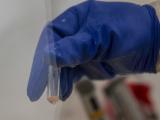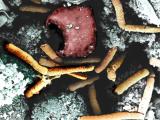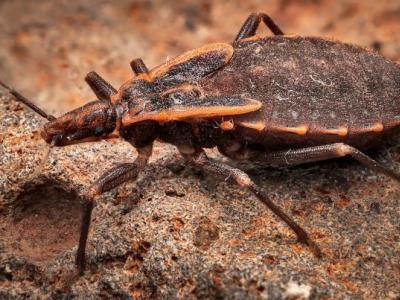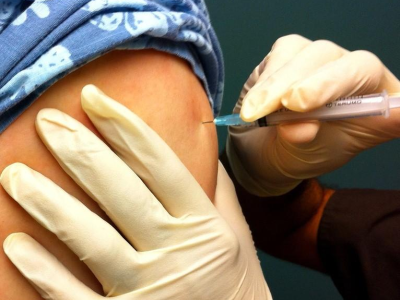Feb 22, 2006 (CIDRAP News) – A 44-year-old New York City man has inhalational anthrax—the first US case since 2001—possibly as a result of using African animal hides to make drums, Pennsylvania and federal officials announced today.
The man collapsed and was hospitalized after performing in a concert in Mansfield, Pa., Feb 16, the Pennsylvania Department of Health (PDH) said in a news release. Blood tests at the hospital indicated possible anthrax on Feb 20, and further testing in a PDH lab confirmed the anthrax diagnosis yesterday, officials said.
The PDH said there was no sign of an intentional release of anthrax and no risk that the man would spread anthrax to healthcare workers or others. Inhalational anthrax is not known to spread from person to person.
"The patient has a history of contact with unprocessed animal hides and recently traveled to Africa, where he purchased unprocessed hides, which were then transported to New York City," the PDH release said. "The patient makes drums from the unprocessed animal hides. Unprocessed animal hides can be a source of anthrax spores."
Five people died of inhalational anthrax and another 17 fell ill after someone mailed anthrax-laced letters to several US media outlets and a US senator's office in 2001. But anthrax disease most commonly occurs as a result of contact with tissues or hides of infected livestock or eating undercooked meat from infected animals. Spores of Bacillus anthracis are found in soil in many parts of the world, and the disease occasionally occurs in US cattle.
The drum maker was in fair condition today, according to Dr. Lisa Rotz, a medical epidemiologist with the Centers for Disease Control and Prevention (CDC), who spoke at a teleconference this afternoon.
"I'm told by the Pennsylvania Department of Health and clinicians treating him that they're very optimistic and happy with the way he's progressing," Rotz said.
The PDH statement listed the patient as being in stable condition at Robert Packer Hospital in Sayre, Pa.
Rotz said the "hypothesis" that the man contracted anthrax from the hides he works with is based on interviews with him and his wife and work by New York City and Pennsylvania authorities.
Authorities plan to examine his work and storage area in Brooklyn, N.Y., as well as his home, according to the PDH. Investigators also plan to talk with people who may have had contact with the man's hides or work area and to contact members of the dance company he performed with.
The New York City Department of Health and Mental Hygiene, the CDC, the FBI, and the PDH are working on the investigation, the PDH said.
Rotz said the CDC reconfirmed the patient's anthrax diagnosis with additional testing this morning and is running further tests. The agency has assigned physicians who were involved in the 2001 anthrax response to help treat the patient, she added.
In response to questions, Rotz said it was not known specifically how the patient brought African hides into the United States. "We're working with our division of quarantine and the USDA [US Department of Agriculture] to identify how he was able to bring the hides in," she said. She explained that the USDA regulates importation of hides.
The concert in which the patient performed was at Mansfield University, the PDH said. The department has sent a team there to talk with people who may have attended the concert, said PDH Secretary Dr. Calvin B. Johnson.
The last naturally occurring human anthrax case in the United States was a case of cutaneous (skin) disease early in 2001, according to Rotz. The country had not had a naturally occurring case of inhalational anthrax since 1976, she said.
See also:
CIDRAP overview of anthrax
















